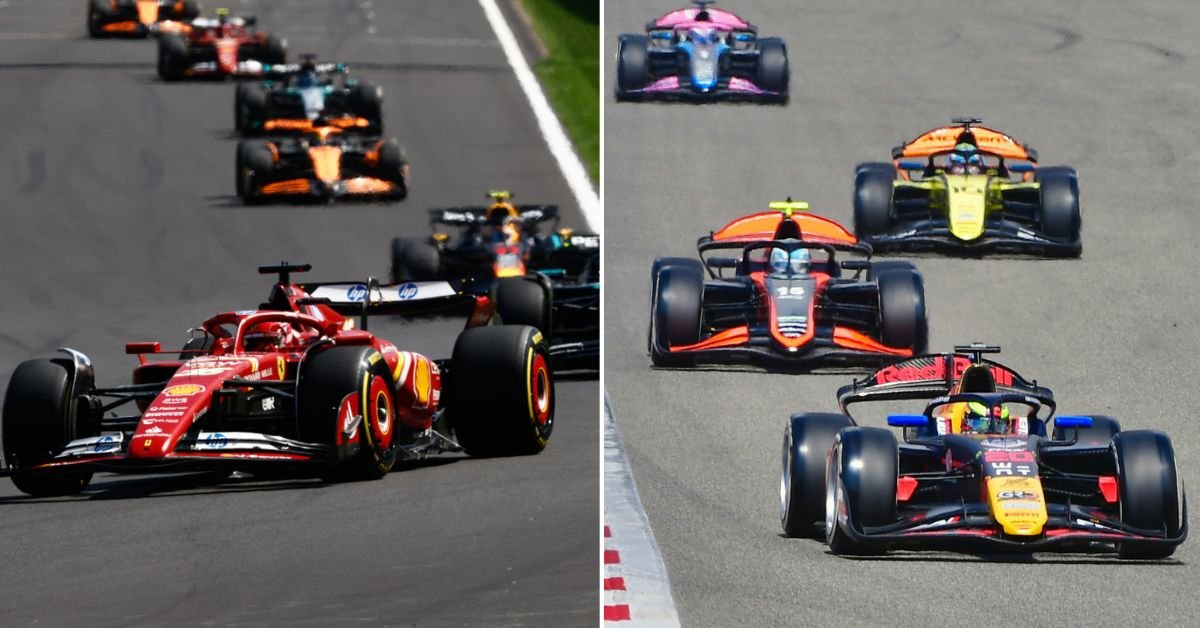Formula 1 is deemed to be the pinnacle of motorsport. Its cars are the fastest, and most powerful, and most racing drivers aspire to be in F1. However, rookie drivers begin their careers in lower formulae to learn the skills to compete in F1. Most drivers compete in F2 and below, before making the jump to F1.
There does seem to be a large gap between F1 and F2, with many rookies struggling to compete and stay in the sport. But why the struggle? How different are the cars between F2 and F1?
F1 cars are far more powerful than F2 cars
F1 cars have much more power than those used in F2. An F1 car will generate around 1,000 horsepower, while the F2 car produces around 620 horsepower. This is due to different engines. F1 uses a complex 1.6-litre turbocharged V6 engine aided by an Energy Recovery System (ERS). In F2, 3.4-litre V6 turbocharged engines are used with no hybrid elements.
The higher power and complexity of the F1 engine as well as greater aerodynamics gives F1 cars a greater top speed, as they can reach speeds of around 370 KMPH to 230 MPH, with F2 cars peaking at 330 KMPH or 210 MPH. F2 cars with a driver on board weigh around 158 kg more than F1 cars also contributing to slower cornering and straight-line speeds.
F1 has been using hybrid power since the 2014 season. This is to make the sport more environmentally friendly. However, the F2 engines use the traditional high-revving turbocharged engines. With biofuel soon to be introduced into F2, these engines will need a major rework.
F3 has already switched to 100% biofuels and the testing seems have to been very successful.
F1 more superior to F2 cars aerodynamically
In F1, far more money is spent on creating the best packages to compete for victories and world championships. The budget teams spend to build the cars could be between $12-16 million, while an F2 car costs around $700,000 to build.
F2 cars use Aluminium to build the exterior and chassis, which is a much cheaper and lighter alternative to carbon Fibre used by F1. However, carbon fibre is much more rigid and stronger than aluminium.
F2 teams have much simpler aerodynamic packages, due to the difference in budgets. They can reach around 2.5Gs of force while cornering, half the amount of an F1 car.
Although both categories use front and rear wings, with bigger budgets, F1 cars have better airflow around the car, creating much better downforce. Due to the much vaster budget, F1 teams can spend on car developments using Computer Fluid Dynamics (CFD) and wind tunnels.












